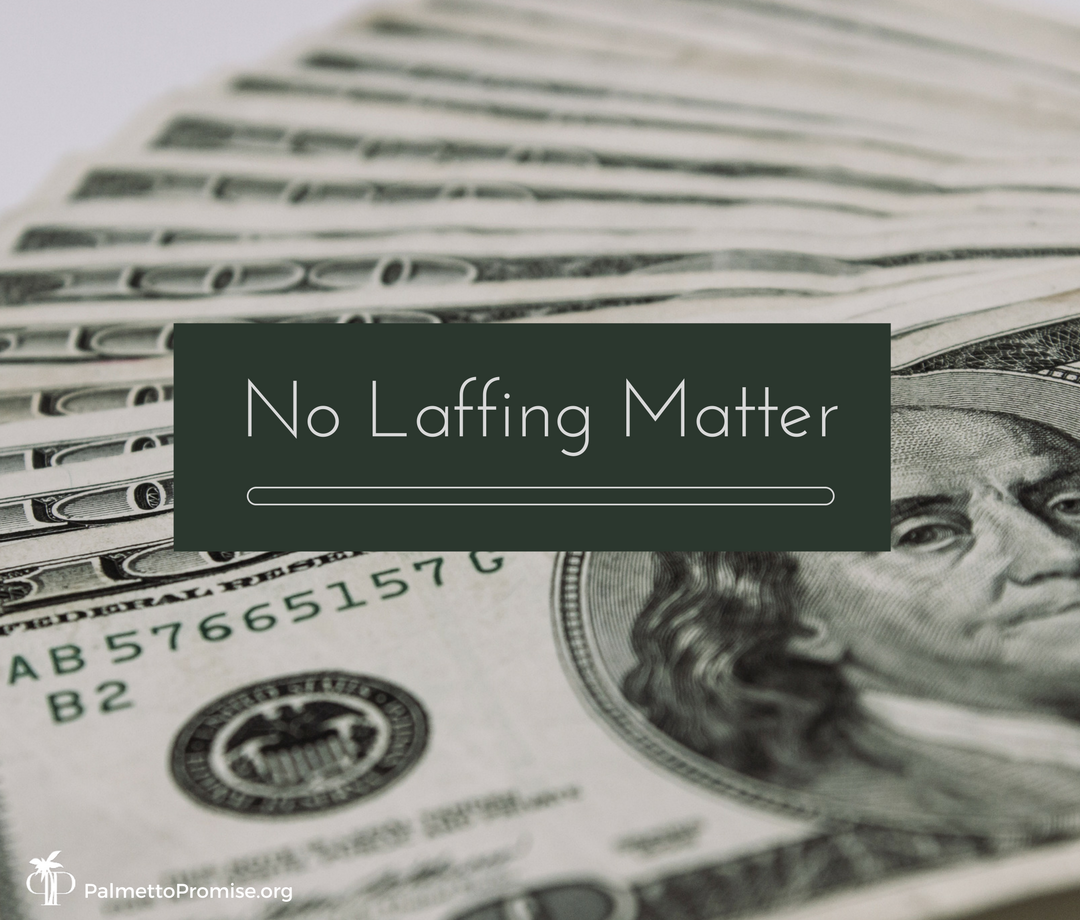No “Laffing” Matter
Who knew a napkin could be so controversial? Donald Rumsfeld, Dick Cheney, Jude Wanniski and Arthur Laffer sure didn’t.
As the story goes, the four gathered for dinner in December 1974. While discussing the then-current recession shadowing the U.S. economy, Dr. Laffer snagged his napkin from his lap and began sketching a doodle that became one of the most renowned stories in all economic history.
The chart penciled by Dr. Laffer emphasized his point during the dinner conversation: that almost all federal government tax rates were too high, squelching economic development and even government revenue.
As his hand-drawn model illustrated: when tax rates are too high revenue decreases, and when rates are too low revenue also decreases. However, the bow in the middle of the line highlights the “optimum tax rate”—the sweet spot, if you will—that would provide a robust, competitive economy and the most revenue to the government.
To this day, the story and the Curve have experienced a rather tumultuous history. Mr. Wanniski—an editorial writer for the Wall Street Journal at the time—preserved the dinner story and coined the Curve’s name in a column, but Dr. Laffer says he doesn’t even remember the events of that night clearly. And as for the theory, many economists in the past four decades since the Curve’s development have loudly doubted its accuracy.Why the fuss about a simple illustration rudely etched on a restaurant napkin, you might ask? The chief economist at the Heritage Foundation, Steve Moore, explains:
“This was the first real post-World War II intellectual challenge to the reigning orthodoxy of Keynesian economics, which preached that when the economy is growing too slowly, the government should stimulate demand for products with surges in spending. The Laffer model countered that the primary problem is rarely demand — after all, poor nations have plenty of demand — but rather the impediments, in the form of heavy taxes and regulatory burdens, to producing goods and services.”
When a movement began to push back the failed Keynesian policies of the post-WWII era, pro-government spending economist’s feathers were ruffled. And in the years following the adoption of supply-side policies by the Reagan administration, ideas like the Laffer Curve have become a favorite scapegoat for every economic difficulty facing the U.S. economy.
But far from multiplying economic distress, it actually paved the path toward competitive tax rates that gave rise to one of the most prosperous times in our nation’s history. Some pan the 80’s as a “decade of greed” and celebrate the 90’s as a golden age. But what their bare political assessment fails to account for is the time needed for policies to reach their full impact. The fact is, even as income tax rates rose during the Clinton presidency, America’s economy was roaring forward – in large part, thanks to the ideas spawned by Art Laffer’s famous Curve.
All this brings us to our current, less-prosperous time. Did you know the United States has the highest corporate income tax rate in the world? That’s right, the highest in the world! This unbelievably high rate of 39% has ushered in an unwelcoming, uncompetitive business environment. No wonder corporations such as Burger King are moving their headquarters to more business friendly countries.
In recent years, we’ve even seen more American businesses closing than opening – a dramatic reversal of 30 years of steady growth.
On it’s face, the reasoning for raising tax rates appeals to an innate sense of justice—it’s only fair that if you make more money you pay more, so it’s said. But this line of thinking doesn’t achieve its ultimate goal of redirecting resources from the rich to help the poor.
As the Laffer Curve simply illustrates, unreasonably high tax rates actually hurt the economy and therefore the citizens most in need of help. By motivating businesses to locate somewhere other than America, uncompetitive tax rates punishes American workers by chasing off jobs and investment overseas. And yes, it actually lowers government revenue.
Now this issue is not just a national issue. These principles also apply to South Carolina. The number one thing we could do to attract more jobs to our state would be to reform our outdated tax code. Our neighbors all around us – North Carolina, Georgia, Tennessee and Florida – have already figured this out and are moving forward. South Carolina can’t get left behind!
Indeed, this is no “laffing” matter.



